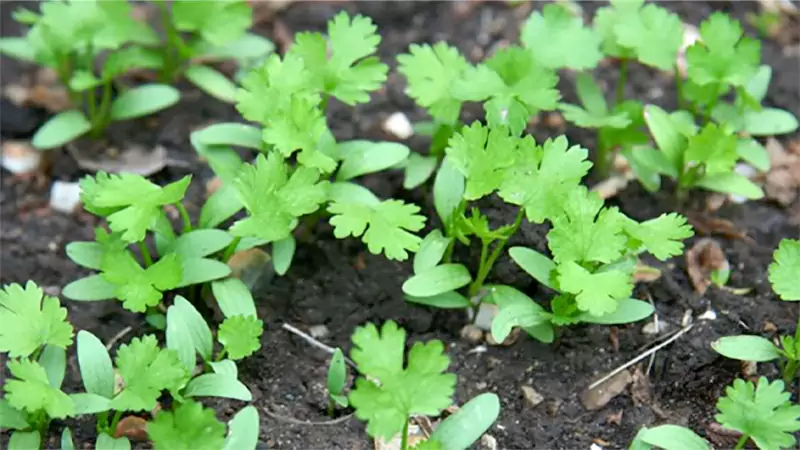
“When life gives you lemons, don’t just make lemonade – grow a whole tree!”
I have always been excited about the idea of growing a versatile sour fruit from scratch. My journey of learning how to plant a lemon tree from a seed was extremely delightful.
Whenever I slice a lemon, I can’t help but save a few seeds to grow a vibrant tree.
Additionally, while I was doomscrolling on Reddit, I came across many plant enthusiast conversations asking how to plant lemon seeds. It’s really exciting to see so many people sharing tips and their personal experiences!
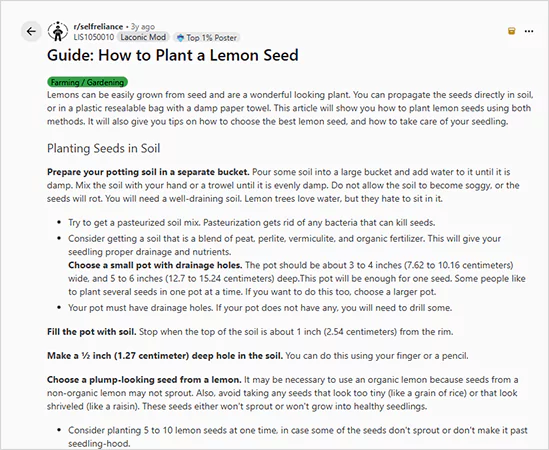
Therefore, in this guide, I will explain how to grow a lemon tree from a seed, care tips, and enjoy the fresh citrusy vibe it brings to the garden.
How to Plant a Lemon Tree From a Seed?
Whenever I get a citrus seed or a lemon plant seedling, I simply follow a step-by-step process that keeps things easy and fun. From collecting seeds to watering the first sprout, every step is rewarding for me.
Here is the procedure that I follow for growing lemons from lemon seeds.
Prepare the Seeds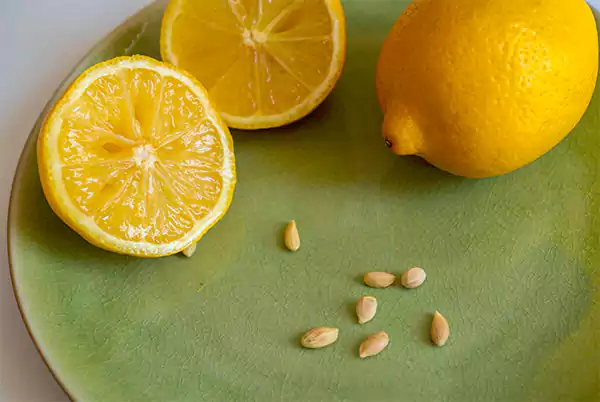 |
|
Plant the Seeds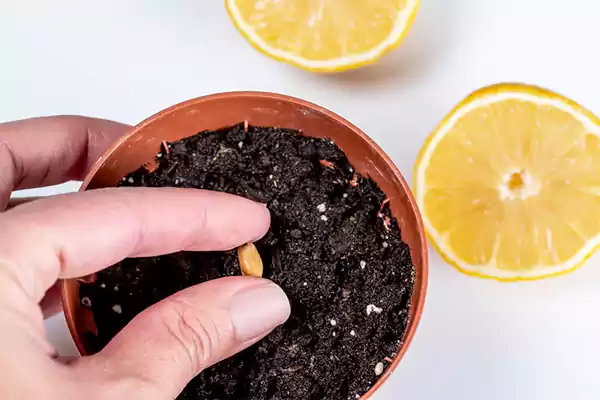 |
|
Provide the Ideal Conditions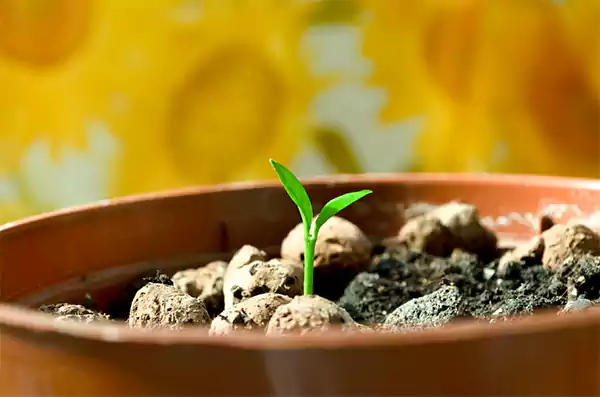 |
|
Grow the Seedling |
|
Following these steps helps me get fresh lemon seedlings full of life. Each procedure, be it carefully rinsing the seeds or wrapping up the pot to mimic humid conditions, feels like a small victory to me.
Though it takes around 10–15 years for the plant from lemon seeds to bear fruit, seeing it flourishing into a beautiful tree, with glossy green leaves, is worth the wait!
An Easy Step-by-Step Lemon Tree Care Guide
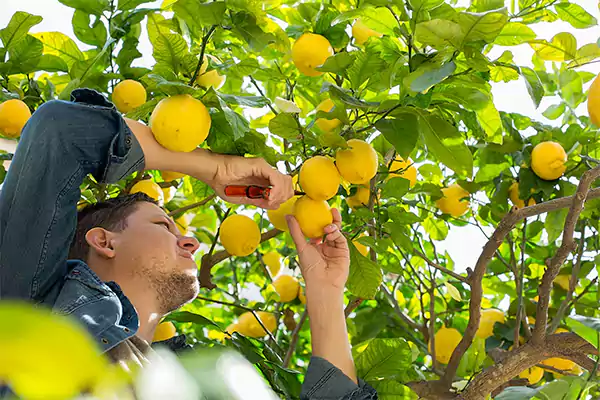
Caring for a lemon tree and growing from lemon seeds feels like nurturing a species very close to nature. As soon as the seeds sprout, I make sure to provide the plant with the ideal conditions for its optimal growth.
If you are planning to plant lemons from seed, in the section given below, I have mentioned an elaborate care guide that I personally follow, and it always gives me fruitful results.
Sunlight Exposure
Lemon trees prefer growing under bright sunlight. They thrive in warm and humid climatic conditions, ideally temperature range between 75 and 85°F. If you are growing it as an indoor plant, make sure to keep the species outdoors for a minimum of 6 to 8 hours for optimal growth.
Soil Texture
A well-draining, medium-textured soil works best for most of the citrus trees. Make sure that the soil is evenly moist, but never too soggy. Avoid mulching to prevent the water from pooling in the pot, as it can cause root rot.
Water Requirement
Adequate watering is the most important aspect in the lemon tree care guide. During the initial stages, lemon trees require frequent watering, but once established, moderate watering is enough as they become drought-tolerant.
Fertilizer
Feed the tree with a balanced NPK fertilizer in the ratio 10:10:10. Since the genus is an aggressive plant, it requires chemical supplements for optimal growth. Deficiency in Nitrogen, Phosphorus, or Potassium can cause yellowing of the leaves.
Pruning
Trimming and pruning of the lemon tree depend on its growth habit. Some species do not require much maintenance, while others need timely inspection. The ideal time to prune a lemon tree is from late winter to early spring, before the new growth appears.
I have realized that nothing can go wrong if you provide your plant with consistent care. Regular inspection and making sure that the bloom gets adequate sunlight and water can go a long way!
What are the Common Problems Faced by Lemon Tree?
I personally feel that growing lemons from seed is a delightful experience. The only downside of the genus that I felt is its susceptibility to pests and plant diseases. If not treated immediately, these can damage the plant completely.
Here are some common problems faced by the lemon tree that you should watch out for.
| Aphids: These are soft-bodied insects, often found on the downside of the leaves. If you ever find a sticky substance on the stem or foliage of the lemon tree, there is a chance that the plant has been affected by aphids. |
| Scale: Tiny insect having a hard, shell-like skin that sticks to the leaves of the lemon tree and extracts honeydew, affecting the growth of the plant. |
| Mealybugs: These are soft, oval, and cotton-like insects that affect the sap of the lemon tree. These can easily be treated and washed off by a strong jet of water. If not treated timely, these can cause yellowing of the leaves and degrade the quality of the lemons. |
| Armillaria Root Rot: This is a type of root rot that can easily damage and kill the lemon plant. As the name indicates, it has an impact on the tree’s root structure, resulting in reduced fruit quality. |
| Bacterial Blast: Bacterial blast is a plant disease caused by the bacteria Pseudomonas syringae. If you see tiny black spots on the leaves of the lemon tree, it could be a bacterial blast. |
| Citrus nematode: Almost all the citrus trees are susceptible to this fungal disease. Citrus nematode is a microscopic worm that lives in soil and plant tissue and mostly affects the fruits of the citrus tree. |
| Phytophthora gummosis: This is a bark disease. If you notice dry patches on the bark of the tree, it is likely to be Phytophthora gummosis. Sometimes the fruits of the plant also get affected, and they eventually decay. |
| Sooty Mold: Sooty mold is a sap sucking insect usually spotted on the underside of the leaf. This is a black fungus that leaves a sticky residue on the surface of the foliage. |
Almost all the citrus trees are very susceptible to pests and plant diseases. I feel that taking immediate action is the only solution to treat them. My tree once got affected by fungal gnats. I used insecticidal soaps and horticultural oils to remove them completely.
Conclusion: The Vitamin C VIP
Planting a lemon tree from seed always feels like magic to me. Watching that tiny seed sprouting and growing into a luxuriant sapling fills me with joy, while also teaching me the value of patience.
I was initially extremely restless and impatient when I learned that it takes around 10–12 years for a lemon tree to produce fruit. But trust me when I say this, it is completely worth the wait. You simply need to provide the plant with ideal growing conditions, and soon you will have your very own vitamin C VIP in your garden!
How long does it take to grow a lemon tree from a seed?
Though the initial sprouting of the lemon tree from a seed happens in about a week or two, it takes around 10–15 years for a lemon tree to produce its fruit.
Will a lemon tree planted from seed definitely produce fruit?
Yes, a lemon tree planted from seed will definitely produce fruit, though the quality and the taste differ from the parent fruit. The quality of the lemons also remains unpredictable and may not be as flavorful and juicy.
Do you have to soak lemon seeds before planting?
Yes, it is often recommended to soak lemon seeds before planting, as it enhances the chances of germination and speeds up the process of sprouting. It also softens the hard outer cover of the seed, which is also important for germination.
What are the care requirements of the lemon tree?
The lemon tree thrives under bright sunlight. It needs a minimum of 6–8 hours of direct sun exposure. Once the tree is established, it requires moderate watering.

